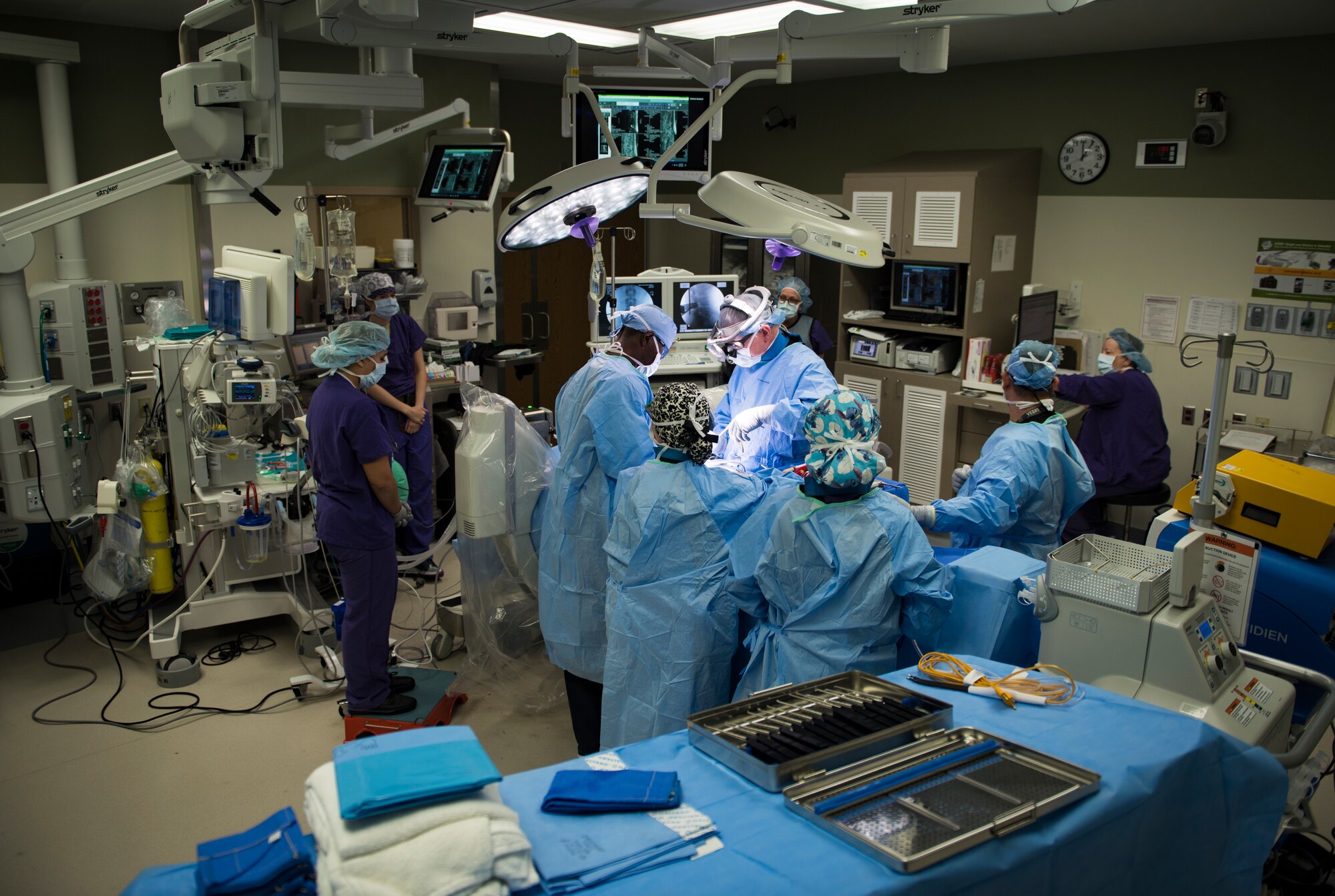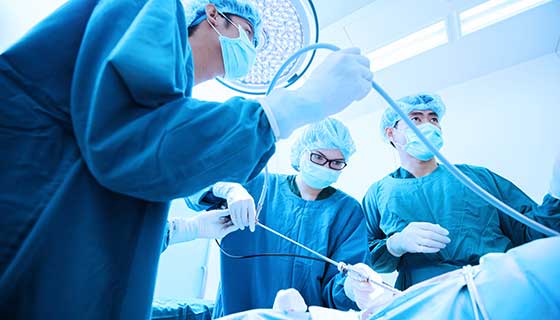Just How Insurance coverage Works with the Best Spine Surgeons in St Louis MO
Just How Insurance coverage Works with the Best Spine Surgeons in St Louis MO
Blog Article
Understanding the Typical Spinal Column Problems That May Require Surgical Intervention
An extensive understanding of common spine troubles that might demand surgical intervention is vital for both healthcare service providers and clients. Conditions such as herniated discs, spinal constriction, and degenerative disc condition not only affect mobility yet can also significantly harm high quality of life. While conventional treatments often supply alleviation, there are instances where surgery ends up being the most feasible choice for bring back function. As we discover the different problems and their effects, it ends up being noticeable that the decision-making process surrounding medical intervention is diverse and complex, elevating important questions concerning timing, dangers, and results.
Herniated Discs
Herniated discs are a common back condition, commonly arising from age-related degeneration or severe injury. best spine surgeons in st louis mo. This problem occurs when the soft inner product of a back disc protrudes with its external layer, possibly compressing nearby nerves. The resulting signs and symptoms can consist of localized discomfort, tingling, prickling, or weak point in the arm or legs, depending upon the afflicted location of the back
Diagnosis typically includes a thorough case history and checkup, often supplemented by imaging studies such as MRI or CT checks. These analysis devices permit healthcare experts to examine the extent of the herniation and its influence on bordering structures.
Therapy alternatives for herniated discs vary from conservative steps, such as physical therapy and medicine, to more intrusive procedures. Many patients discover alleviation with non-surgical strategies, which concentrate on pain management and recovering feature. When conservative treatments stop working to alleviate signs and symptoms or when neurological deficiencies emerge, medical intervention may be warranted.
Surgical alternatives, consisting of discectomy or spine fusion, aim to relieve stress on the afflicted nerves and bring back spinal security. The choice to pursue surgery is typically made after mindful factor to consider of the client's total wellness, seriousness of symptoms, and feedback to previous therapies.
Spinal Constriction

Symptoms usually aggravate with tasks that need long term standing or walking, bring about a condition called neurogenic claudication. Diagnosis commonly includes imaging researches, such as MRI or CT scans, which assist visualize the degree of constriction and identify impacted areas.
Treatment options for spine constriction may begin cautiously, using physical therapy, discomfort management strategies, and lifestyle alterations. When these interventions fail to offer relief or when neurological deficits develop, medical options may end up being needed. Surgical interventions, such as decompression laminectomy or spine fusion, objective to eliminate pressure on the back cable and nerves, thereby relieving discomfort and bring back function. Early treatment is crucial, as prolonged compression can result in permanent damage and complications.
Scoliosis
A significant variety of people are affected by scoliosis, a condition characterized by an irregular lateral curvature of the back (best spine surgeons in st louis mo). This curvature can establish in different kinds, including idiopathic scoliosis, official website which emerges without a well-known reason, or as an outcome of neuromuscular problems, hereditary aspects, or degenerative diseases. The seriousness of scoliosis can differ considerably, varying from moderate contours that may not call for treatment to severe instances that can bring about pain, respiratory issues, and lowered lifestyle
Non-surgical interventions consist of monitoring, bracing, and physical treatment. Surgical intervention might end up being needed for clients with significant curvature that is aggravating, or for those experiencing devastating signs and symptoms. Surgical alternatives typically include spine combination, which aims to deal with the curvature and support the back.

Degenerative Disc Disease

DDD is often a result of the natural aging procedure, yet aspects such as genes, way of living, and repeated stress can accelerate its beginning. Patients regularly report localized pain in the reduced back or neck, which might emit to various other areas, such as the limbs. In serious instances, nerve compression can lead to neurological signs and symptoms, consisting of tingling, tingling, or weak point.
While conventional therapies, such as physical treatment and pain monitoring, can ease signs for many people, some might call for surgical intervention. Surgical choices, such as spine fusion or fabricated disc replacement, goal to bring back security and ease pain by attending to the underlying issues triggered by DDD. A thorough evaluation by a back professional is vital to figure out one of the most suitable treatment approach.
Fractured Spine
Broken vertebrae represent a substantial concern in back health, often resulting from injury, weakening of bones, or various other degenerative problems (best spine surgeons in st louis mo). These cracks can bring about extreme pain, loss of mobility, and potential complications such as back instability or neurological deficits. The device of injury generally includes either direct trauma, such as falls or car accidents, or the progressive weakening of bones because of conditions web like weakening of bones
Medical diagnosis is generally verified with imaging research studies, consisting of X-rays, CT scans, or MRIs, which reveal the degree and type of fracture. Treatment options vary depending upon the fracture's seriousness and the individual's general health and wellness. Conservative management may entail discomfort alleviation, rest, and physical therapy; however, medical treatment may be necessary for displaced cracks, those creating back instability, or when conventional procedures stop working.
Surgical approaches can consist of vertebroplasty or kyphoplasty, treatments targeted at stabilizing the vertebra and reducing discomfort. In a lot more severe instances, spine combination may be indicated to recover structural integrity. Suitable and prompt intervention is vital in guaranteeing optimal recuperation and reducing long-term problems related to broken vertebrae.

Verdict
In summary, usual spinal column problems such as herniated discs, spine stenosis, scoliosis, degenerative disc illness, and fractured vertebrae can significantly harm high quality of life and necessitate medical treatment. While conventional therapies may give relief in several situations, relentless or severe signs usually call for medical choices to recover feature and minimize discomfort. Timely diagnosis and ideal management are necessary to enhance individual end results and facilitate healing in individuals influenced by these debilitating conditions.
Spine constriction is a problem characterized by the narrowing of the back canal, which can lead to compression of the spinal cord and nerve roots. Surgical treatments, such as decompression laminectomy or back fusion, objective to eliminate stress on the back cord and nerves, thus relieving discomfort and restoring function. Surgical choices, such as spine combination or fabricated disc replacement, objective to bring back security and relieve discomfort by resolving the underlying issues triggered by DDD. Conventional administration might include discomfort alleviation, remainder, and physical therapy; however, surgical intervention may be needed for displaced cracks, those triggering back instability, or when traditional measures fail.
In recap, common back troubles such as herniated discs, back constriction, scoliosis, degenerative disc condition, and broken vertebrae can significantly impair quality of go to website life and necessitate medical treatment.
Report this page